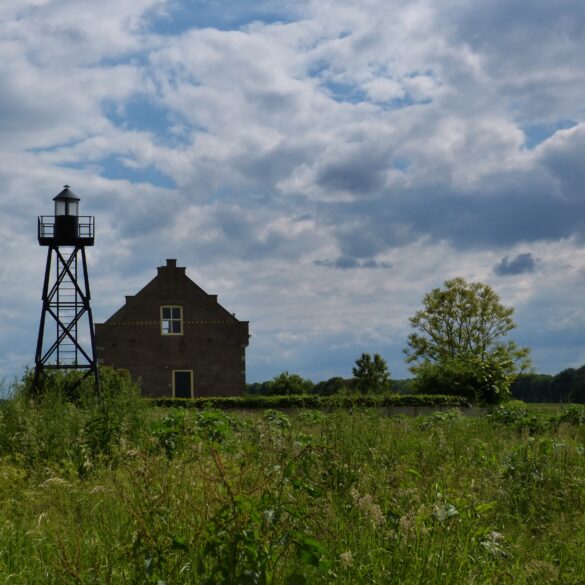On the last full day of our four-night trip to Leiden in the Netherlands over the Memorial Day weekend, we actually explored the city of Leiden instead of doing a side trip as we had the previous two days.
I’ll just go ahead and start this post off with a photo of a windmill as that’s what everyone expects to see in a blog about the Netherlands.

It’s called the De Valk (The Falcon) mill and it was built in 1743. It’s original purpose was to grind corn but it has housed a museum since 1966. It was damaged during World War II and was later restored. We didn’t have time to visit the museum because of the limited opening hours on the day we spent in Leiden. Reading more about it now, though, I wish we had. The museum shows not only the workings of the mill but the living quarters of millers who resided and worked there. In addition, the mill is now operational again and the gift shop sells flour made there.
This bell hangs between two houses in a square called the Beestenmarkt (cattle market).

Despite being at the cattle market, it’s called the Sheep Bell. A cattle market was established at the square in 1616. Later, sheep were sold as well and it became a livestock market that was held until 1969. The Sheep Bell, installed in 1734, was rung to indicate when trading could begin for the day.
I just love the gabled houses that you see all over the Netherlands and other parts of Europe.

This is one of Leiden’s two remaining city gates of the original ten.
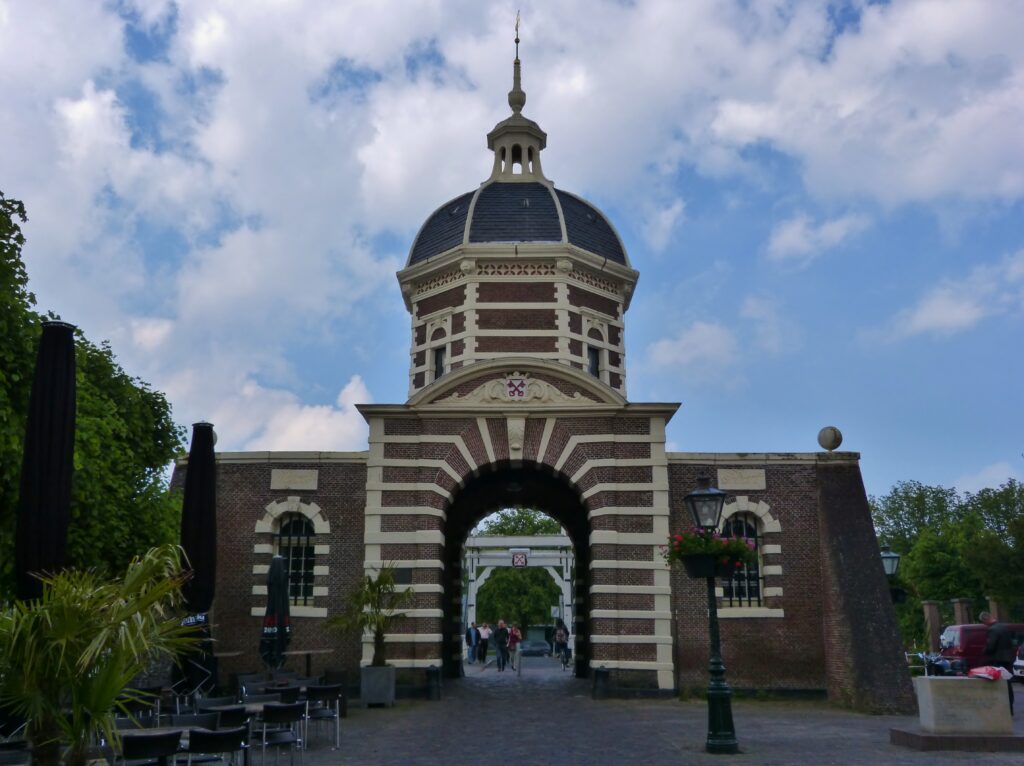
It is now called the Morspoort (Marsh Gate)because of the marshy area that used to surround the city. It used to be called the Gallows Gate because it led to Gallows Field, which is where I assume they used to hang criminals.
This nice little square is called Rembrandtplein.

You can probably guess that it was named after the artist Rembrandt van Rijn. A plaque on a nearby building indicates that Rembrandt was born there on July 15th, 1606. Incredibly, the house was torn down in the early 1900s so a printing business could be expanded.
The Doelenpoort (Doelen City Gate) seen here dates from 1645.

The sculpture on top of it shows St. George slaying the dragon.
Next to the gate is the house you see here with the black door.
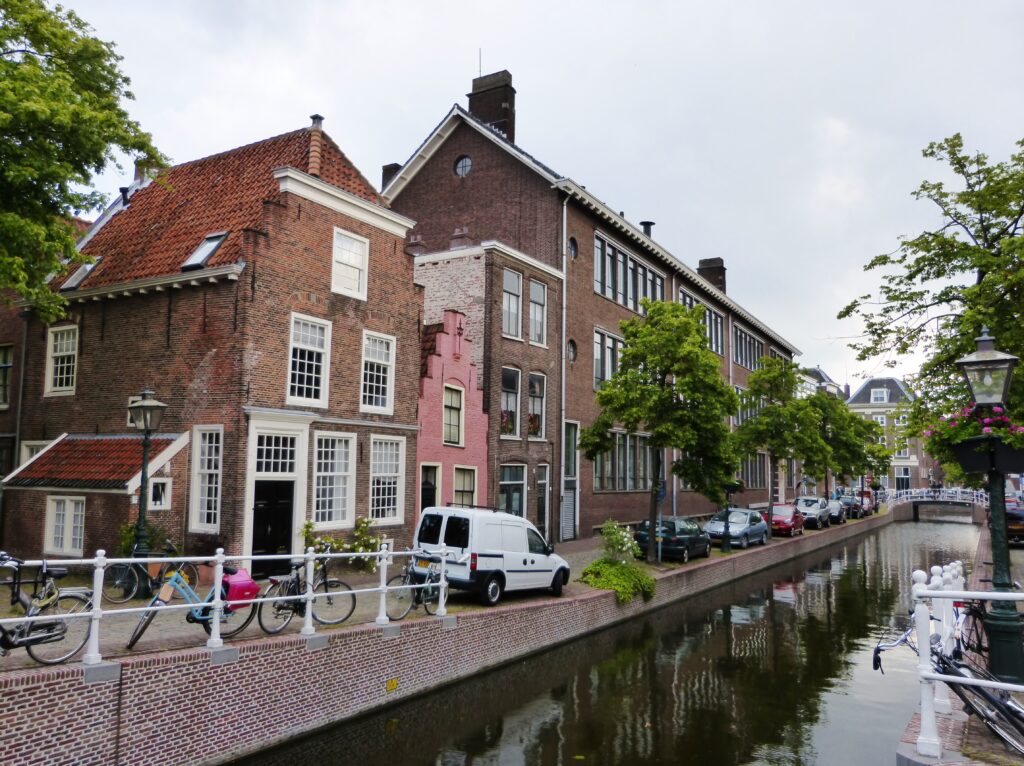
The area around the gate used to be the red light district back in the 1600s and that house belonged to a prostitute whose nickname was The Green Hare. I can’t find anything to say why that was, so my imagination is just running wild. However, the canal in front of it is called the Groenhazengracht or Canal of the Green Hare. So, the prostitute could have gotten her nickname from the name of the canal or it could have gone the other way around. I kind of like the little pink house next to the Green Hare’s House.
This botanical garden is located at the University of Leiden, the first university in the Netherlands.

The garden is called Hortus Botanicus. It is the oldest garden in the Netherlands at over 400 years old. The first tulips in Western Europe were planted there. You can walk around inside the gardens, but you have to purchase a ticket for it.
At this point in our walk we decided it was time to stop for some food and some liquid refreshment. We found a nice little café overlooking a canal, not a difficult thing to do in the Netherlands.

The building you see there was the first one to be used by the university when it was founded in 1575. It was formerly a chapel that belonged to nuns of the Dominican Order.
A sign near this canal – the Vliet, dug in the year 47 AD by the Romans – indicates that a couple of important events took place here.

The first is that in 1574, the Spanish laid siege to Leiden. As a counter-attack, the Dutch opened the dikes in August 1574 to flood the land and drive back the enemy. When the Spaniards finally retreated at the beginning of October 1574, the Dutch went to the camp they abandoned and brought back a pot of food called hutspot. Hutspot consisted of potatoes, onions and carrots. The English dish hotchpot, a stew made of meat and barley, is similar to the term hutspot. The word later evolved into the word hotchpotch or hodge-podge and came to mean a jumbled mixture. You learn something new every day. Anyway, on October 3, 1574, a group of Dutch rebels called the Sea Beggars arrived bearing herring and white bread. This along with the hutspot was gobbled up by the residents of Leiden who had been starved during the Spanish siege. To this day, October 3rd is a day of celebration in Leiden and its citizens get free herring and white bread. Yum! (Coincidentally, October 3rd is also a day of celebration in Germany. It’s Germany Unity Day, the day East and West Germany were reunified in 1990. Also coincidentally, October 3rd is a day of celebration in our house because it’s Sean’s birthday!)
The second has to do with the Pilgrims, who took refuge in Leiden in 1608. In 1620, they left Leiden at this spot and headed for Delfshaven before ultimately traveling on to America. (You can read about the Pilgrim connection with Delfshaven in this blog post http://travelsandtipplescom.ipage.com/monster-scheveningen-and-rotterdam/)
Our next stop was Van der Werf Park.

The statue is of Van der Werf himself and it stands at the site of a disaster. In 1807, a ship carrying gunpowder exploded. The explosion killed 160 people, injured 2,000 others and destroyed or damaged buildings all over Leiden. The disaster site was left as-is until 1884 when that statue was erected and the surrounding park was built. Van der Werf was a hero of the 1574 siege of Leiden that you just read about.
The brick building on the left is now the Faculty of Law, part of Leiden University, but it is special for another reason.
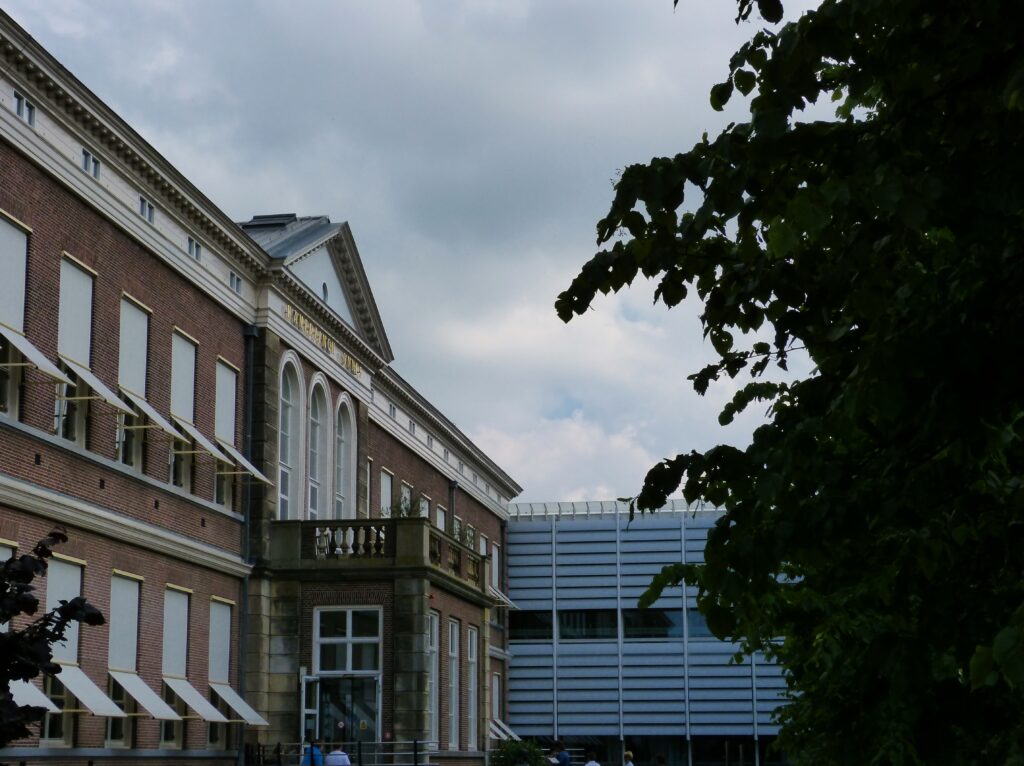
Back in 1908 when the building contained a physics lab, Leiden became known as “the coldest place on earth” when Heike Kamerlingh Onnes first liquefied helium and caused it to reach a temperature that was less than one degree from absolute zero (−459.67 Fahrenheit). He was awarded the Nobel Prize for this work.
Earlier you read that the Pilgrims arrived in Leiden in 1609. When the Pilgrims began leaving Leiden for America in 1620, about half of them stayed behind. One of their leaders, John Robinson, stayed in Leiden and died there in 1625. He is buried here in Pieterskerk (Peter’s Church).
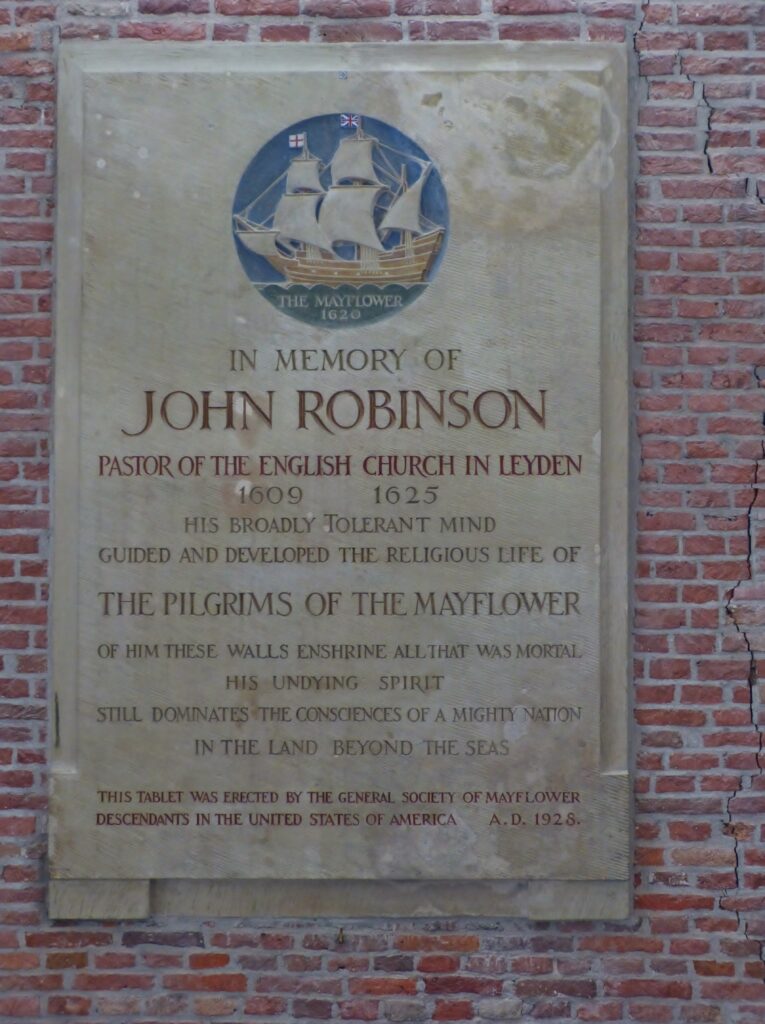
Several of the other Pilgrims who died in Leiden are also buried in Pieterskerk.
There was some kind of hippie-dippy fair going on outside the church when we were there. At this food truck, if you wanted a fruity drink you had to pedal a bicycle to power the blender to mix it yourself.

Actually a pretty cool idea.
At this point we sat on a bench in a little square to cool off and take a rest. There were a bunch of bicycles parked and locked up behind one of the building. This cat was having a grand old time going around to bikes and poking around in the ones that had bags hanging from them like this.

You know there’s only one reason a cat would do that, and that’s because it’s been previously rewarded with a treat from a bag. On this day kitty didn’t seem that lucky, unfortunately. I’m sure more than one bicycle owner has come out to find himself relieved of his snack and wondered what happened to it.
This gabled house has some historical significance.

It used to be a Latin School, and Rembrandt attended classes there.
The day we toured the city was very warm and sunny.
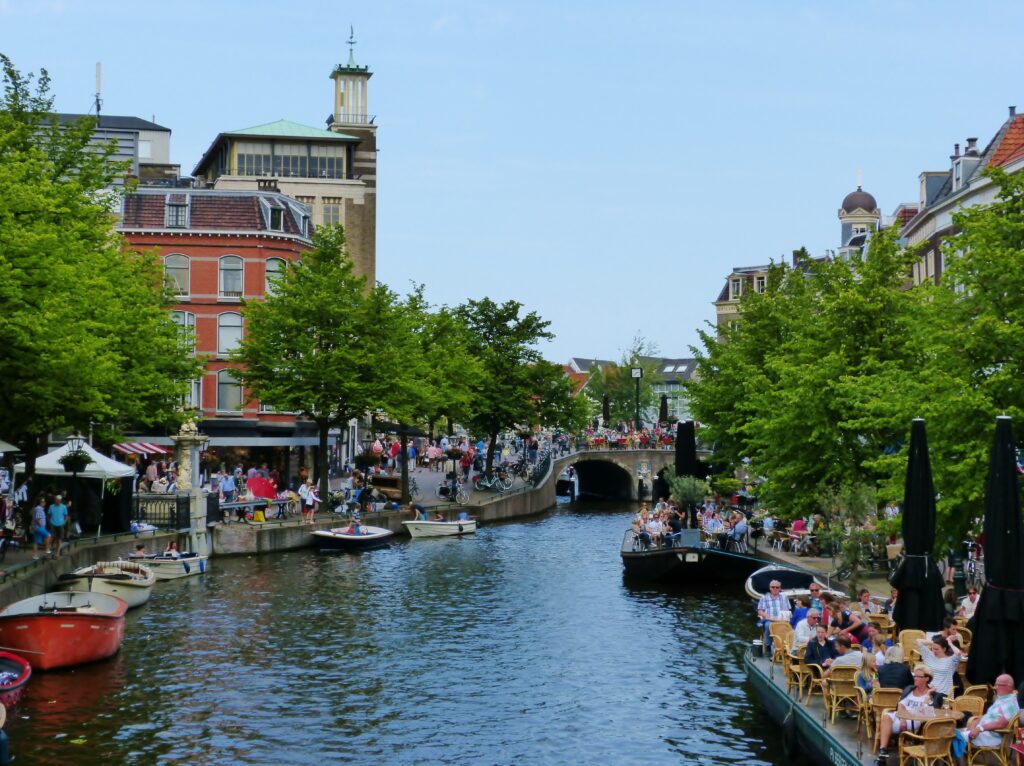
The canals were filled with boaters and the sidewalks and outdoor cafes were filled with people enjoying the weather.
We walked up to the Burcht, an elevated citadel built in the 11th century that provided protection against flooding.
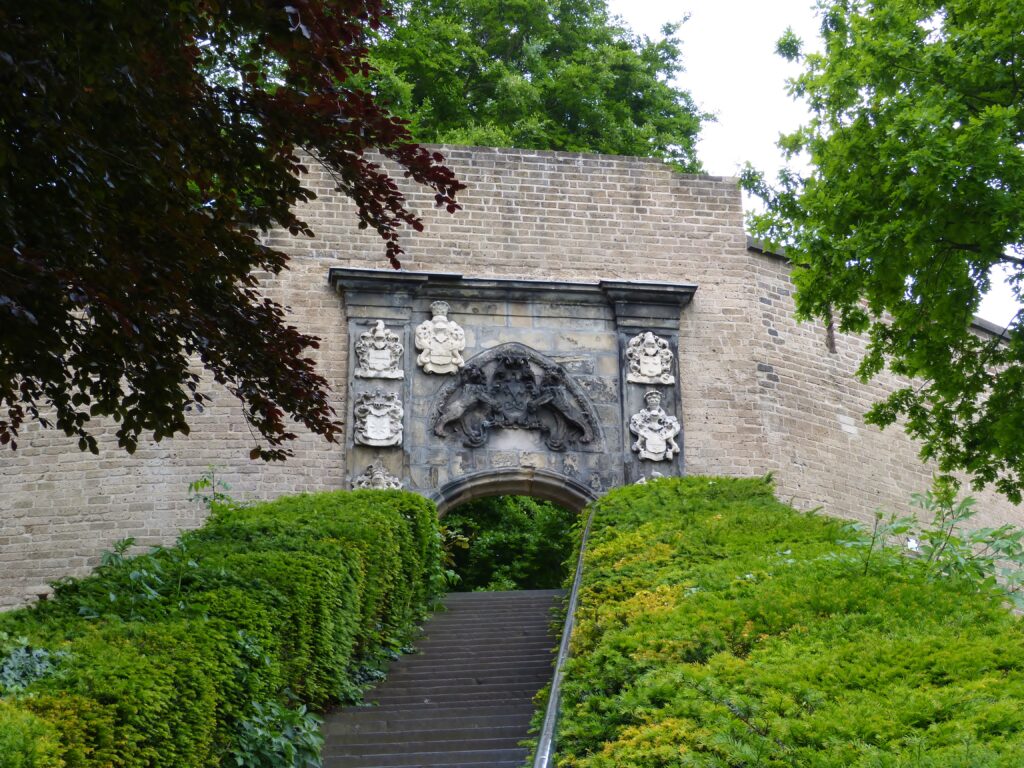
You can walk along the top of the citadel wall and get some nice views of the city. The citadel is now a public park.
This sculpture is on top of the gate that’s the southern entrance to the Burcht.

I just love anatomically correct sculptures.
Here you see the entryway to the former Holy Ghost Orphanage, dating from 1583.
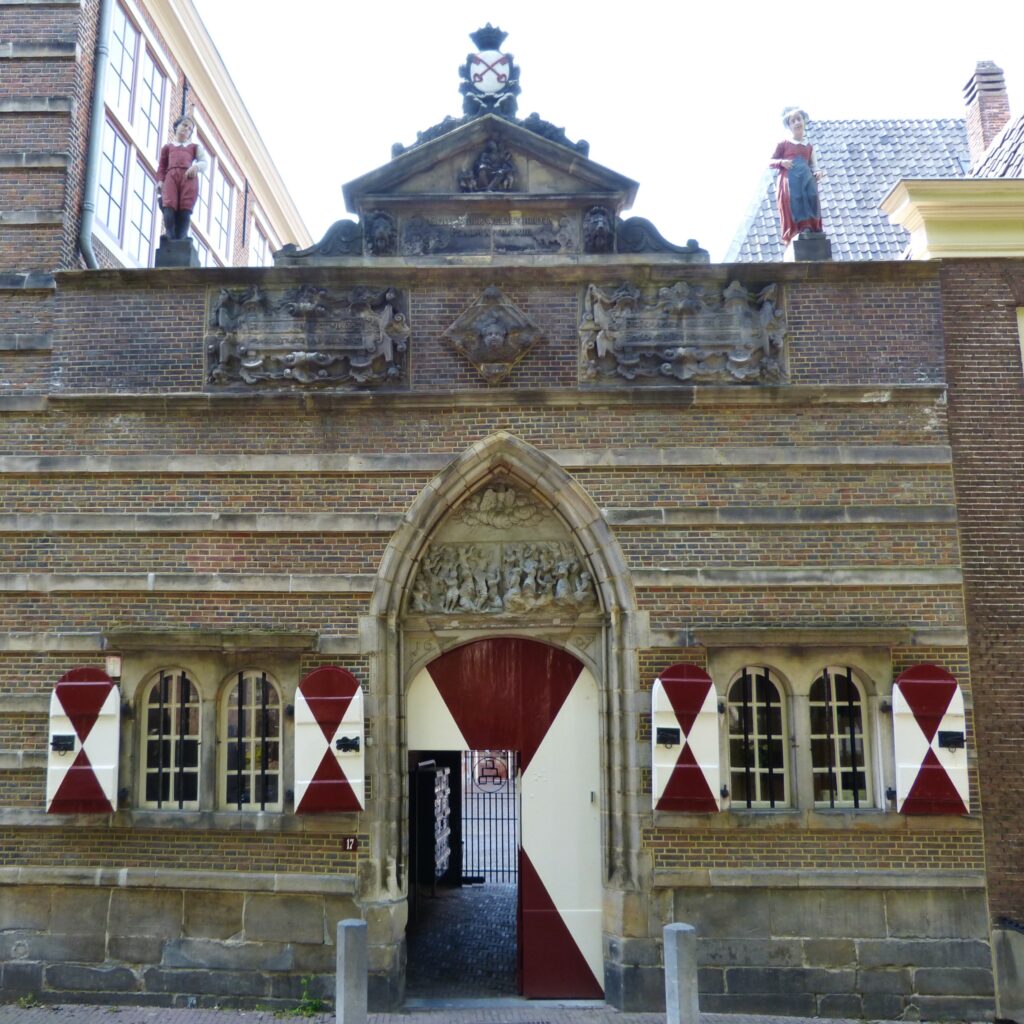
On top of the gate you can see the statues of an orphan boy and an orphan girl. Both full and half orphans (those with one parent) were left here to learn a trade. The building was used as an orphanage until 1961 and now houses an organization for children’s rights.
This Lutheran church was built in the 17th century.

At the time, Calvinism was the state religion and non-Calvinist churches were not allowed to be visible on the public highway. That Lutheran church was hidden behind houses for over 200 years until they were torn down in 1866. As you can see, though, the church is still somewhat hidden away.
This is the Oude Rijn or Old Rhine, a tributary of the Rhine river.
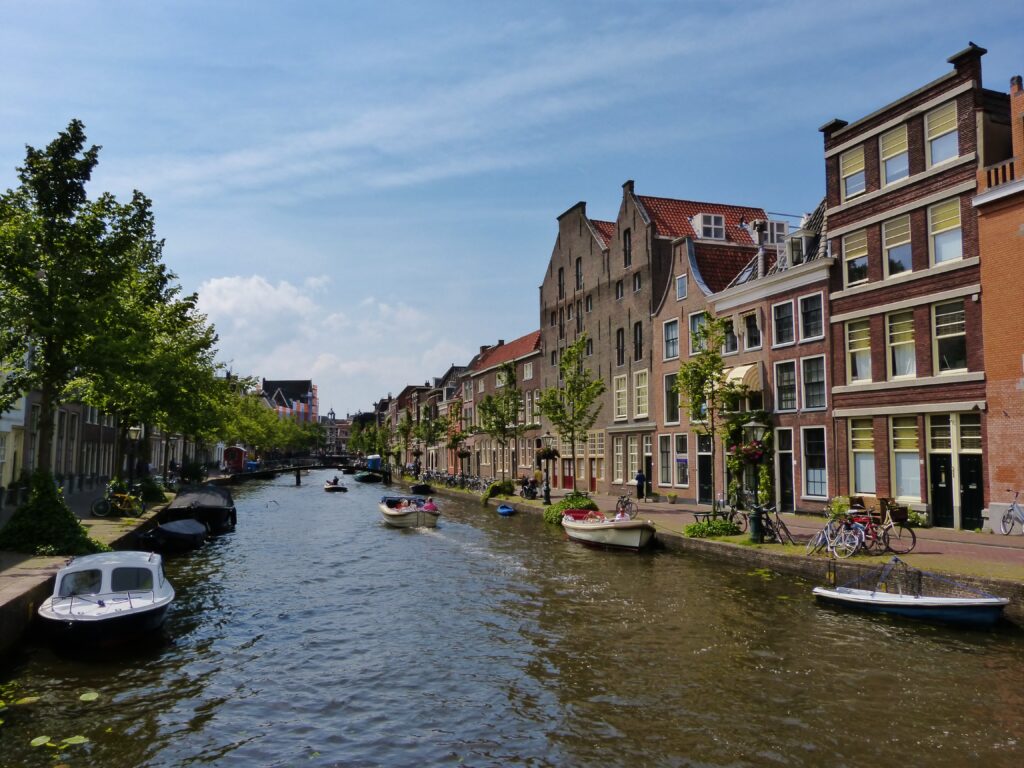
The tallest building you see there was a grain store for the poor but it was a grain store with a catch. You had to attend church services first and you were then given a loaf of bread afterwards.
This building was known as the Weighing House.

It sits right at the edge of a canal because goods used to be delivered by boat. The boats would pull up here and the goods would be weighed so that people purchasing them knew they were getting what they paid for. Above the rounded arch window, you can see a relief sculpture of goods being weighed.
Although our walking tour was almost over at this point, it was time to stop for some liquid refreshement.

The first Tipple of the Day was a Brand beer. Okay, a couple of Brand beers. Brand is a Dutch beer produced by the Netherlands oldest brewery, although it is now owned by Heineken.
Along with the beer, Sean tried some bitterballen, a popular Dutch treat (no pun intended).
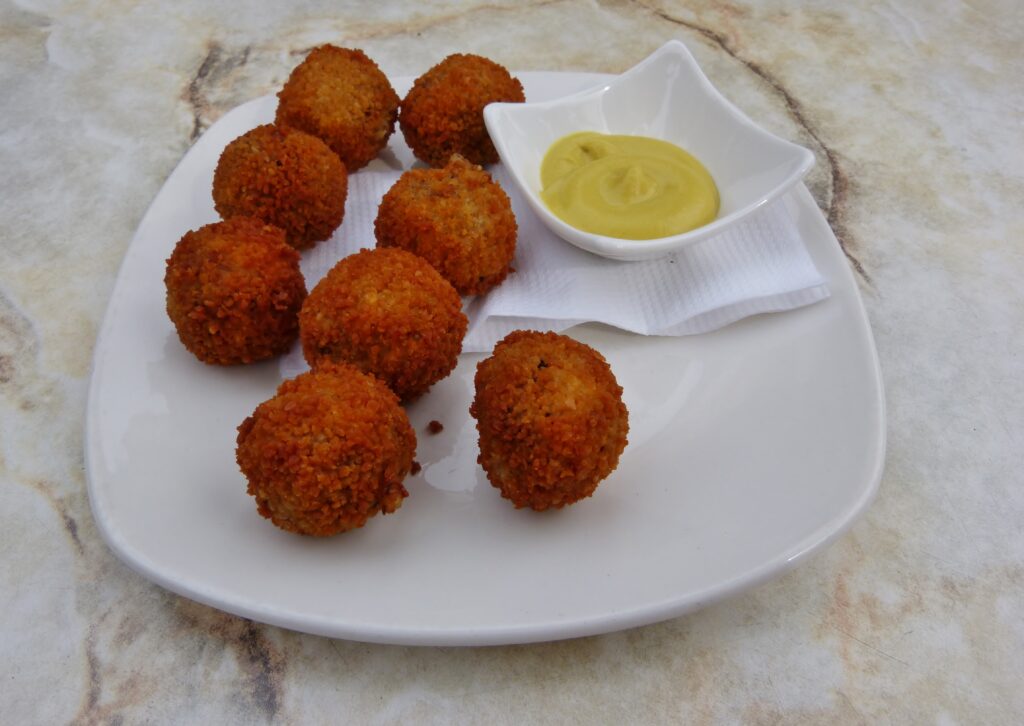
They consist of chopped meat (usually beef) and a bunch of other stuff (flour, butter, seasonings, etc.) that is rolled into balls and then battered, deep-fried and served with mustard. I’m not a big meat-eater so I didn’t try them but Sean said they were good.
This church, whose official name is Our Lady Immaculate, is called Hartebrugkerk (literally “heart bridge church) and it was the first Catholic church built in Leiden.

Yet another name for the church is Koeliekerk and that nickname comes from the inscription you see above the columns. It reads “Hic Domus Dei est et Porta Coeli”, Latin for “This is the House of God and the gateway to heaven.” The word Coeli means heaven and that’s where Koeliekerk come s from.
Here you see all that remains of the Church of Our Lady, originally built in 1330 and demolished in the 1800s.

In the 16th century, this church was given to a French-speaking group of people called Walloons. Two former members of the church sailed with the Pilgrims on the Mayflower and are the ancestors of Presidents Ulysses S. Grant, Franklin Delano Roosevelt, George H.W. Bush and George W. Bush. The square where the remains are located was renovated in 2009 to commemorate the 400th anniversary of the Pilgrims leaving England to settle in Leiden.
This fancy building, now a museum, was built in 1639 and was the Lakenhal or Cloth Hall.
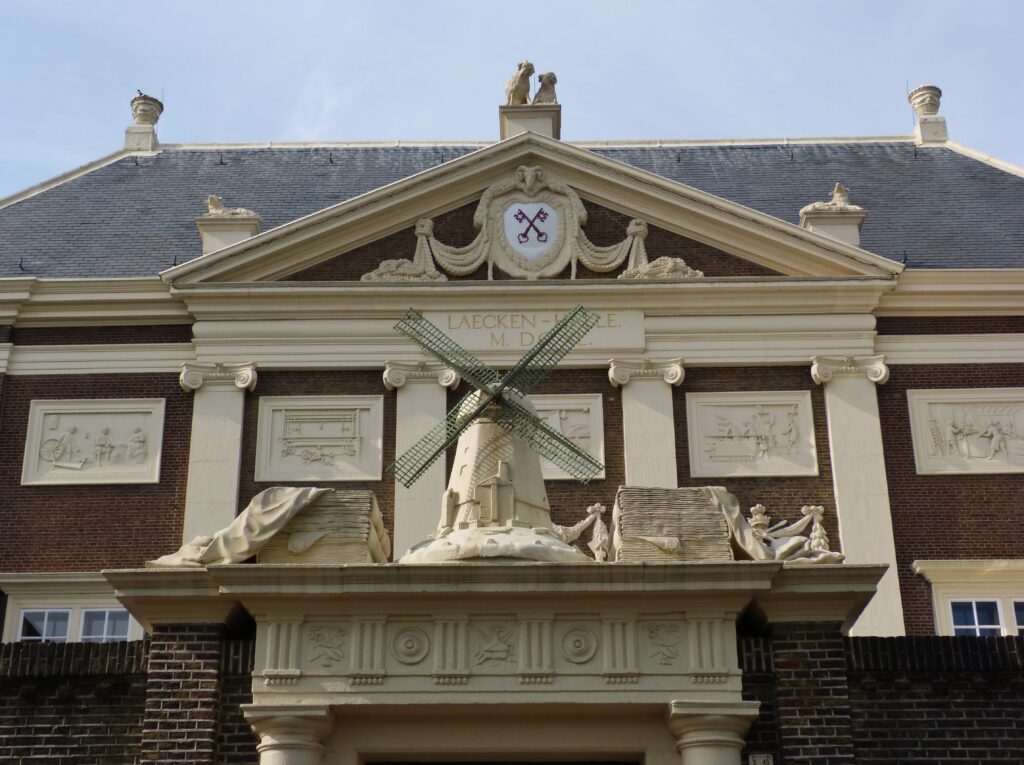
Leiden was at one time well-known for its cloth, which was inspected in that building before being shipped.
That concluded our tour, so it was time for another refreshment stop.

As always, I have to drink some Heineken (okay, several Heinekens) when in the Netherlands. I won’t drink it anywhere else. This bar had the Extra Cold Heinken on tap and it was very refreshing after our day of walking around Leiden. We had stopped at what turned out to be an Australian bar called the Duke of Oz and ended up spending pretty much the rest of the night there hanging out with some English ex-pats.
The following day, we headed back to Germany but because it was Memorial Day we stopped at the Netherlands American Cemetery.
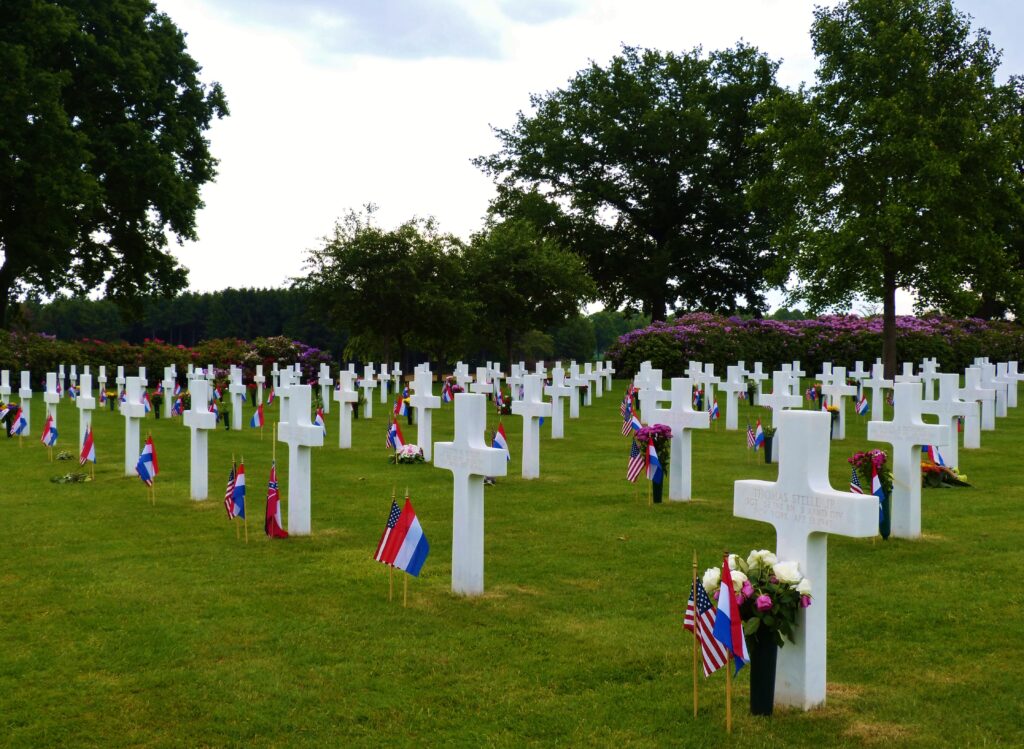
8,301 Americans who died during World War II are buried here. You can see that the headstones were decorated with flags from both the United States and the Netherlands. There was a ceremony taking place later that afternoon but we didn’t stay for it.
Oh, and in case you’re wondering why this post is called “Leiden – City of Keys”, take a look here.

The two crossed red keys you see there are the city’s coat of arms. They represent the keys to the gates of heaven that St. Peter holds. Earlier you read about the Pieterskerk, where some of the Pilgrims who died in Leiden are buried. That church is named after St. Peter. You see this coat of arms all over the city.
Have you visited Leiden? Tell us about it here or on our Facebook page! https://www.facebook.com/travelsandtipples?ref_type=bookmark

